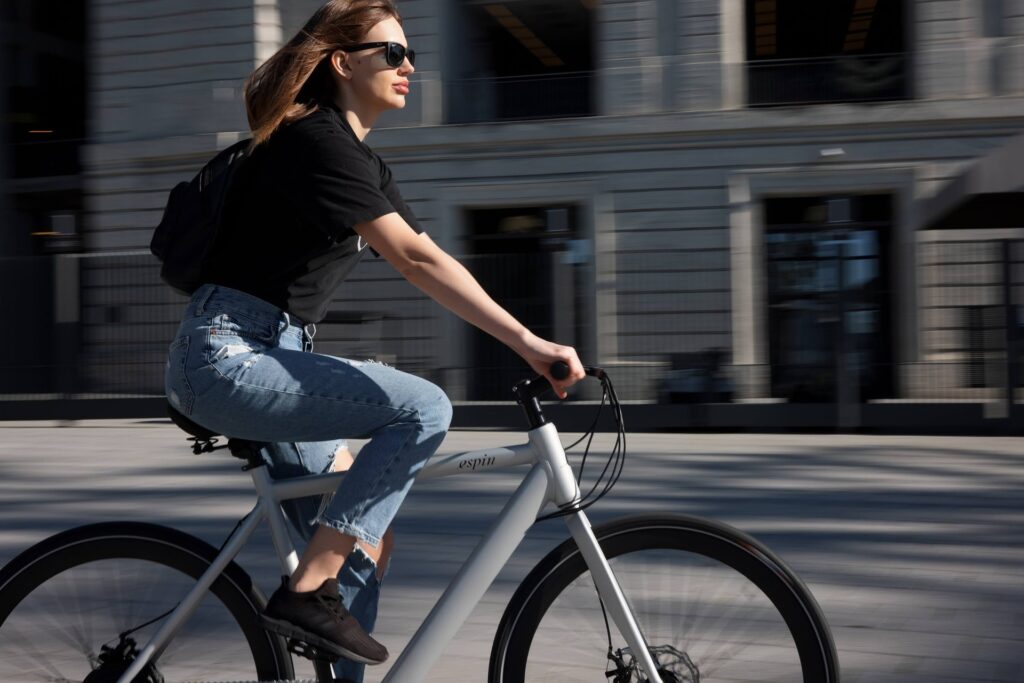Understanding rotation is essential for understanding angular velocity. A pseudovector known as “angular velocity” or “rotational velocity” describes how quickly an object or bicycle rotates in relation to a point or axis. Additionally, it is known as an “angular frequency vector.”
How fast is the bicycle moving?
What is the relationship between bicycles and angular velocity is something that most bikers do not know. The highest speed for a bicycle traveling at a standard upright position while being fully faired is 82 km/h (51 mph) over a distance of 200 m.
What is indicated by angular velocity?
How quickly something rotates through a particular angular displacement is indicated by its average angular velocity. Instantaneous angular velocity provides information on the rate of rotation of an object at a specific moment in time. Angular momentum makes riding a bicycle possible. Unless there is an imbalance in the external torque, the wheels’ angular momentum is a vector that is constant.
The bicycle and rider are in a precarious equilibrium when the wheels are not moving.A cyclist’s performance and cycling speed are influenced by a number of variables in addition to weight: variations in rolling resistance, the air resistance of the cyclist and the bike, and drivetrain efficiency can all have a greater impact on a cyclist’s speed.
What Direction Is The Angular Velocity Of A Bicycle When You Ride It?

Each particle will move at a different speed as an item rotates. While the ‘Direction’ component varies with angle, the ‘Speed’ component varies with radius.
As a result of the fact that all of the velocity vectors are now aligned in the same plane, we may resolve this problem by selecting a single vector that is normal to every single potential velocity vector of the rotating object in that plane.
The “Right-hand rule” is the convention that will be applied to this response. The axle of the wheel is where the angular velocity vector is oriented. Think about placing your right hand around the axle, for instance.s o that your thumb protrudes and your fingers point in the direction of rotation. Your thumb is pointing to the left, as you can see.
When riding a bicycle, the direction of the wheels’ rotation determines the direction of the angular velocity. When observed from above the bicycle, the angular velocity is going clockwise, presuming that the bicycle’s wheels are rotating forward.
The reason for this is that while the bottom of the wheel is moving ahead and to the left, the top of the wheel is moving upwards and to the right. A downward-pointing angular velocity vector is created by the clockwise rotation.
What motion does a bicycle use?

A bicycle can move both rectilinearly and rotationally over a straight path. The movement of a thing along a fixed, circular path Rotational motion is referred to as orbit. Things can move in a straight line through a process called rectilinear motion.
What makes angular velocity crucial?
We can calculate a wheel’s maximum speed in terms of angular velocity. A tire on a car traveling to the right at velocity v is rotating at velocity. As a result, the car advances at a linear speed of v = r, where r is the tire radius thus speed can only be determined with angular velocity.
What consequences does angular velocity have?
The Coriolis effect causes a periodic torque to be produced by an angular velocity parallel to the stem’s axis, and this periodic torque causes the stem to oscillate torsionally.
Advantages of angular speed
Because the pace at which the bike angular position changes over an extended period of time is known as its angular velocity. while riding a bicycle and having fun while competing or mountain climbing Here are some advantages of understanding and using bicycle angular velocity. Bicycle angular velocity is an important aspect that affects the bicycle balance, stability, and calmness of the riding experience.
- You can accelerate during a race by comprehending the theory and notion of angular velocity. This is so that the bike rider can change the rotational speed of the bike to propel it along more quickly. The quicker the wheels rotate, the faster the bike moves.
- Balance is one of the most crucial considerations when choosing a bicycle however restraint is also important to note because nobody wants to crash throughout their voyage. By ensuring that the wheels revolve at a constant speed, maintaining a constant angular velocity helps balance the bike, especially on unpaved or bumpy roads.
- Every cyclist values having control, especially when they are riding. You may manage yourself better by simply understanding the angular velocity because you’ll know how to correct yourself and best direct the bike.
- Cycling’s primary function has always been linked to its effectiveness. Hence Cycling enthusiasts can accomplish a more effective use of energy and lower the amount of work needed to maintain their speed by optimizing the angular velocity of the wheels.

